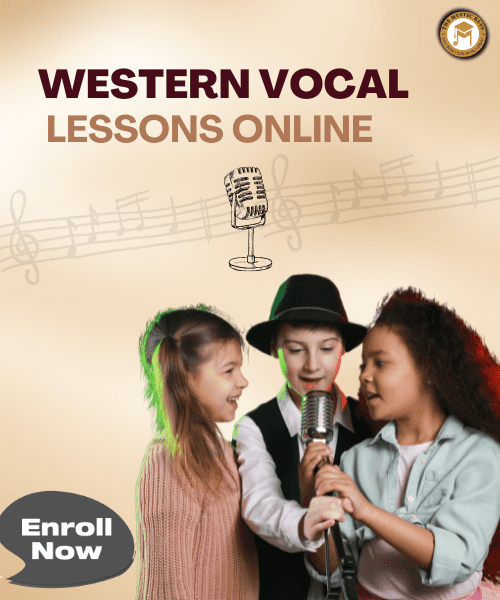Sing With Emotion and Conviction | A Complete Guide
Singing is much more than just hitting the right notes or perfecting vocal techniques. While mastering the technical aspects lays the groundwork, it is far from the whole picture. The true essence of singing lies in storytelling—connecting deeply with your audience and conveying the emotions woven into every lyric. When you learn to sing with emotion and conviction, your performance transcends mere sound; it transforms into an immersive experience that genuinely moves hearts.
Whether you are a beginner finding your voice or a seasoned vocalist looking to deepen your impact, embracing emotional expression is a game-changer. Throughout this blog, we will explore how to tap into your feelings, shift your mindset, and apply vocal techniques that allow you to sing with emotion and conviction effortlessly. So, let’s embark on this journey together and discover how to bring authenticity and passion to every note you sing.

Understanding the Power of Emotion in Singing
Before jumping into techniques, it’s essential to understand why emotion matters in singing.
Singing is a universal language that transcends words. When a singer conveys authentic feelings—be it joy, pain, love, or longing—it resonates with listeners on a profound level. This emotional connection is what turns a good performance into an unforgettable one.
ChatGPT said:
Emotion is the fuel behind the voice, bringing warmth, color, and intensity to every note you sing. Without this vital ingredient, even the most flawless notes can sound mechanical or flat, lacking the soul that truly moves listeners. Therefore, to truly Sing With Emotion and Conviction, the very first step is to open your heart and genuinely feel the music. By connecting deeply with the emotions behind each lyric, you transform your singing from mere sound into a powerful, heartfelt experience that captivates and inspires.

Connect Deeply with the Song’s Meaning
One of the biggest keys to singing with emotion is understanding the story behind the song.
Read the lyrics carefully. What is the songwriter trying to say? What emotions are embedded in the words?
Visualize the scenario. Imagine the story unfolding as a movie in your mind. Picture the characters, the setting, and the mood.
Relate personally. Find your own experiences or memories that align with the song’s emotions. This personal connection allows you to bring sincerity to your delivery.
By immersing yourself in the song’s narrative, you’ll naturally sing with more depth and conviction. This connection creates the foundation for genuine emotional expression.

Use Your Voice as an Emotional Instrument
The voice is uniquely capable of expressing subtle emotions. Beyond hitting the notes, it’s about how you sing them.
Here’s how to use vocal techniques to convey feeling:
Dynamics: Vary your volume—soften in tender moments, and build intensity in powerful sections. This contrast creates emotional ebb and flow.
Tone color: Adjust the timbre of your voice to match the emotion. A breathy tone can sound vulnerable, while a brighter tone may convey happiness.
Phrasing: Shape the melody with slight delays or anticipations in timing to add expression and tension.
Vibrato: Use vibrato tastefully to add warmth and emotion, but avoid overdoing it, which can sound artificial.
Articulation: Emphasize certain words or syllables to highlight their emotional significance.
By experimenting with these elements, your voice becomes a dynamic tool that carries not only melody but emotion too.

Engage Your Body and Mind
Singing with emotion isn’t just a mental or vocal exercise—it’s a full-body experience.
Body language: Use facial expressions and gestures that reflect the mood of the song. Even subtle movements can enhance authenticity.
Breathing: Deep, relaxed breaths allow your voice to flow freely and support emotional intensity.
Posture: Standing or sitting with good posture helps your breath control and projects confidence.
Mindfulness: Be present in the moment. Focus entirely on the song rather than distractions or self-criticism.
Release tension: Nervousness or stiffness can block emotional expression. Practice relaxation techniques like stretching or gentle movement before singing.
When your body and mind are aligned with the emotion of the song, your performance becomes powerful and convincing.

Practice Emotional Visualization and Storytelling
A great method to develop emotional singing is through visualization and storytelling exercises.
Visualization: Before singing, close your eyes and imagine the scene or story of the song. Feel the emotions as if you are living them.
Acting: Think of singing as acting. Use your voice to portray the character’s feelings authentically.
Record and review: Record yourself singing with emotional intent. Watch it back to observe whether the feelings come through and where you can improve.
Improvise: Try singing the song in different emotional moods to explore vocal possibilities. For example, sing a happy song with sadness and notice how your voice changes.
These exercises deepen your emotional connection and expand your expressive range.

Learn from the Masters
To truly sing with emotion and conviction, it’s helpful to learn from those who have mastered the art. Listening to great singers known for their emotional delivery can be incredibly inspiring and insightful. As you listen, pay close attention to how they phrase each lyric, how they use dynamics to create tension and release, and how they infuse their unique personality into every performance. Watching live performances or emotionally charged videos can also provide visual cues on how they embody the song’s feeling.
Once you’ve observed, try singing along—not to imitate, but to internalize the emotional approach. Experiment with their style, then gradually add your own flavor and interpretation. Artists like Adele, Whitney Houston, Sam Smith, and legends like Billie Holiday and Frank Sinatra have beautifully balanced technical precision with heartfelt expression. By studying their approach, you can gather valuable tools that will help you not just sing the notes, but sing with true emotion and conviction.

Build Confidence Through Consistent Practice
Singing with emotion requires courage and vulnerability. It’s natural to feel self-conscious at first.
To overcome this:
Practice regularly in a safe environment where you can explore emotions without judgment.
Warm up your voice and body before singing to prevent strain.
Start small by expressing emotion in simpler songs or phrases.
Perform for trusted friends or record yourself to build comfort.
Celebrate progress and don’t be afraid to take risks.
Over time, confidence grows, and singing with conviction becomes more natural.

Use Emotional Memory and Personal Experiences
Many singers find that the most powerful performances come from within—by tapping into their own memories to evoke genuine emotion. To Sing With Emotion and Conviction, start by recalling a personal experience that aligns with the song’s theme. Whether it’s a moment of heartbreak, a joyful milestone, or a time filled with hope, let those emotions rise to the surface. As you revisit these memories, allow the associated feelings to shape your vocal tone, phrasing, and expression. This method, known as emotional memory, bridges the gap between technical singing and heartfelt delivery, resulting in a performance that feels raw, honest, and deeply moving to your audience.

Avoid Overacting | Aim for Authenticity
While it’s essential to sing with emotion and conviction to create a powerful connection, it’s equally important to avoid overacting or exaggerating feelings. When emotions are overdone, performances can quickly come across as forced or insincere, which can distance your audience rather than draw them in. Instead, strive to keep your emotions genuine and subtle when the song calls for it. Remember, sometimes less is more—those quiet, tender moments often carry the greatest impact. Allow your voice to naturally reflect the true feelings behind the lyrics, rather than pushing too hard or trying to manufacture emotion. In the end, authenticity is the key to truly moving your audience and making your performance unforgettable.

Conclusion | Make Emotion Your Musical Signature
Singing with emotion and conviction transforms your performance from mere notes on a page into a living story that truly touches souls. At The Mystic Keys, we believe that great singing begins with genuine connection—not just to the music, but to your own heart. To truly sing with emotion and conviction, you need more than technical skill. It requires vocal artistry, mindful presence, emotional awareness, and the courage to be vulnerable.
Through our Western Vocal Lessons Online, we help aspiring singers tap into that emotional depth while developing their unique voice. As you continue your singing journey, take time to explore your feelings, listen with intent, and express your story through each performance. The most unforgettable singers are those who open up, sing from the heart, and bring their truth to every note. Let your voice be more than sound—let it be your soul in motion.
For more information and exciting resources about learning music, visit our website at The Mystic Keys. For more music content and exciting offers follow us on
Facebook, Instagram, YouTube, LinkedIn, Twitter, Pinterest, and Threads,








